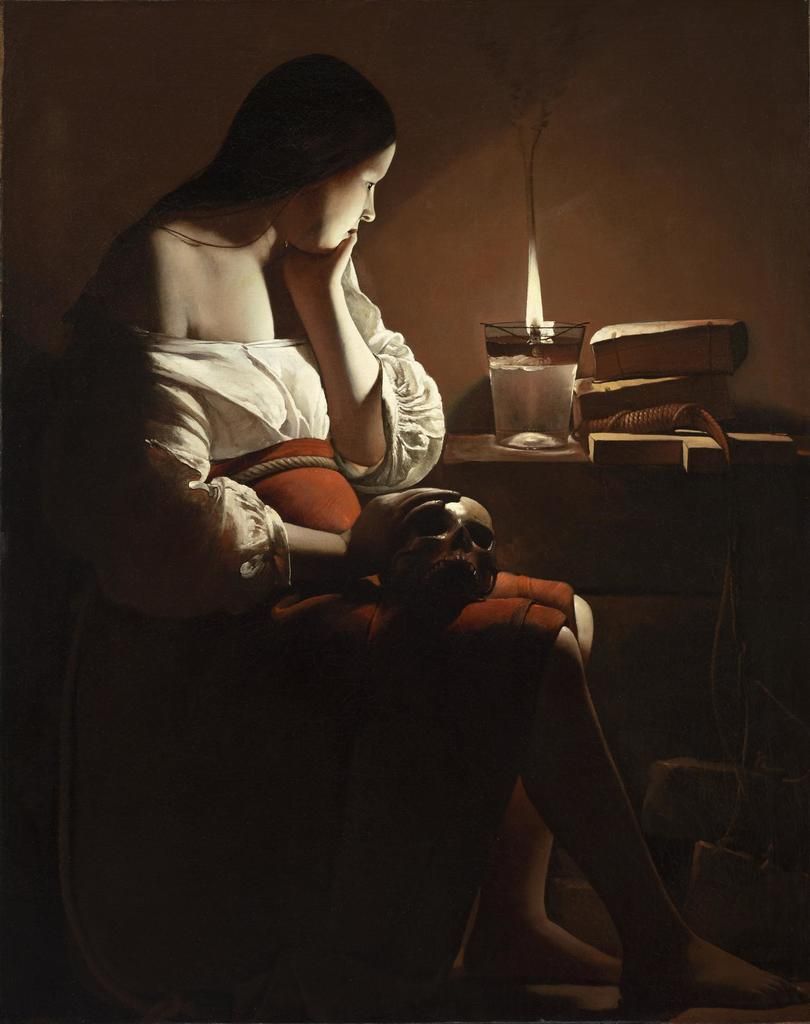
The Magdalen with the Smoking Flame
Although Georges de La Tour spent his entire artistic career in provincial France, far from cosmopolitan centers and artistic influences, he developed a poignant style as profound as the most illustrious painters of his day. In his lifetime his work appeared in the prominent royal collections of Europe. La Tour's early training is still a matter for speculation, but in the province of Lorraine he encountered the artist Jean Le Clerc, a follower of the Italian painter Caravaggio. From this source likely came La Tour's concern with simplicity, realism, and essential detail.
Mary Magdalen was traditionally depicted in her grotto or as an aged woman. The absence of explicit narrative in this painting emphasizes Mary's state of mind and heart rather than time and place. The simple composition of vertical and horizontal shapes draws the viewer into the Magdalen's contemplative world. The skull, books of Scripture, and scourge set the mood, but the chief symbol and true subject of the work is the candle at which Mary gazes in her meditation. Rendered in extraordinary detail and modulation, it emits the light that followers of St. John of the Cross called "the living flame of love," toward which spiritual pilgrims are drawn out of the "dark night of the soul."
La Tour scrupulously conveys the tactile quality of surfaces. The polished skull and leather books have different reflective qualities; Mary's heavy skirt, thin, wrinkled blouse, smooth flesh, and hair are meticulously distinct. Each spare detail is carefully regulated to achieve an overall balance of form and light.
Credit: Gift of The Ahmanson Foundation
Public domain image and text courtesy of Los Angeles County Museum of Art.
c. 1638-1640
Oil on canvas
144.8 x 120.7 cm
Where you'll find this

Los Angeles County Museum of Art
Permanent collection




